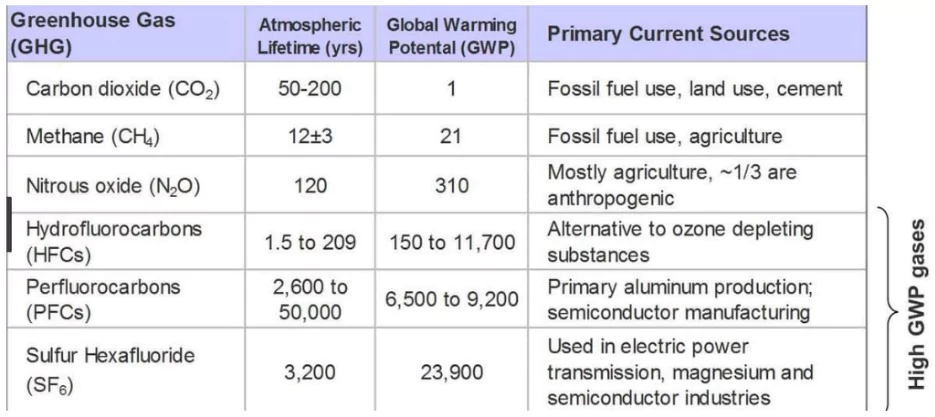Greenhouse gas levels surged to a new record in 2023, rising by more than 10% in just two decades, according to a new report by the World Meteorological Organization (WMO).
India’s Nationally Determined Contributions (NDCs)
- India’s Nationally Determined Contributions (NDCs) are a climate action plan that aims to reduce emissions and adapt to the effects of climate change.
- India’s NDC targets include:
-
- Reducing emissions intensity: Reducing the emissions intensity of India’s GDP by 45% by 2030, compared to 2005 levels
- Renewable energy: Increasing the share of renewables in electricity generation to 50% by 2030
- Carbon sink creation: Creating an additional 2.5 to 3 billion tonnes of carbon sink through forests by 2030
- Net zero carbon emissions: Achieving net-zero carbon emissions by 2070
- Green hydrogen: Producing five million tonnes of green hydrogen by 2030
- Renewable energy capacity: Installing 500 GW of renewable energy capacity by 2030
|
Enroll now for UPSC Online Classes
Key Highlights of report
- Current Reduction Plans:
- The UN report states that existing Nationally Determined Contributions (NDCs) would only reduce emissions by 2.6% from 2019 levels if fully implemented.
- Needed Reduction:
- To limit global warming to 1.5°C, the IPCC recommends a 43% reduction by 2030 and a 60% reduction by 2035.
- UN Climate Change Statement:
- Simon Steill, UN Climate Change executive, emphasized the need for stronger action in upcoming NDC updates to meet climate goals.
- GHG Surge in 2023:
- WMO reports record-high GHG levels in 2023, with CO2 concentration reaching 420 ppm, an increase of 2.3 ppm from 2022.
- Historical CO2 Context:
- Current CO2 levels are similar to those 3-5 million years ago, when temperatures were 2-3°C higher and sea levels were 10-20 meters above current levels.
- Radiative Forcing Increase (1990-2023):
- Warming effects from long-lived GHGs increased by 51.5%, with CO2 responsible for 81% of this rise (NOAA data).
- Climate Feedback Concerns
- Potential Vicious Cycle:
- WMO warns that warming could turn natural ecosystems into GHG sources, as wildfires release more carbon and oceans absorb less CO2.
- Long-term Impact of CO2:
- CO2’s long atmospheric lifespan means temperature levels will remain elevated for decades, even with emission reductions.
- Factors Driving Rising GHG Levels
- Human Activities:
- High CO2 emissions from fossil fuels and reduced forest carbon absorption are major contributors to rising GHG levels.
- Natural Causes:
- El Niño-induced warmer temperatures, dry vegetation, and wildfires have increased GHG emissions.
- Methane Surge (2020-2022):
- Methane levels saw their largest three-year rise, primarily due to increased emissions from natural wetlands during La Niña conditions.
- India’s Climate Commitments
- Updated NDCs (August 2022):
- India aims to reduce emissions intensity of its GDP by 45% from 2005 levels and ensure 50% of electricity generation capacity from non-fossil fuel sources by 2030.
- Global Standing:
- Despite a 6.1% rise in emissions in 2023, India’s historical contribution to global emissions remains at 3%.
About Global Warming Potential (GWP)
- Measure of how much heat a greenhouse gas (GHG) traps in the atmosphere compared to carbon dioxide (CO2).
- GWP is used to compare the effectiveness of different GHGs in causing global warming

|
Check Out UPSC NCERT Textbooks From PW Store
About the World Meteorological Organization (WMO)
- The WMO is an intergovernmental organization with 193 member states and territories.
- India is one of the Member States of the WMO.
- Origin: WMO originated from the International Meteorological Organization, the roots of which were planted at the 1873 Vienna International Meteorological Congress.
- Establishment: WMO was established by ratifying the WMO Convention on 23rd March 1950.
- Specialized Agency: It became the specialized agency of the United Nations for Meteorology (weather and climate), operational hydrology and related geophysical sciences.
- Headquarters: Geneva, Switzerland.
![]() 30 Oct 2024
30 Oct 2024

